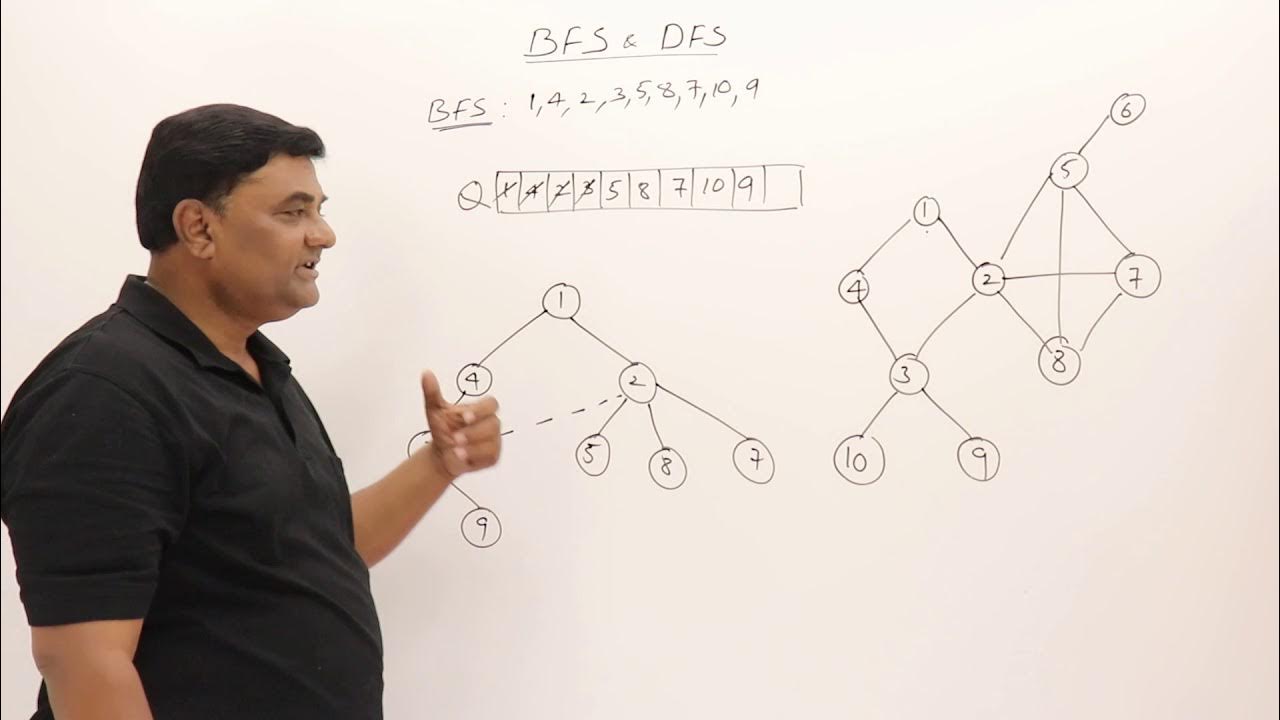94. OCR A Level (H046-H446) SLR14 - 1.4 Data structures part 3 - Stacks & queues (operations)
Summary
TLDRThis video, part 3 of a 5-part series, explains how to traverse, add, and remove items from stack and queue data structures. It covers key operations like 'push' and 'pop' for stacks, and 'enqueue' and 'dequeue' for queues, highlighting procedural and object-oriented implementation approaches. The video emphasizes checking for full or empty structures before modifications and explains how to dynamically handle stack and queue sizes. Additionally, it explores the concept of abstract data structures and encourages a deeper understanding beyond memorizing code patterns. Practical coding examples are also provided in the accompanying book.
Takeaways
- 📚 This video is part 3 of 5 in a series covering stacks and queues, focusing on how to traverse, add, and remove items from these data structures.
- 📝 Adding an item to a stack uses the 'push' operation, and it is important to first check if the stack is full before adding an item.
- 🔄 Stacks can be implemented using arrays (static) or objects (dynamic), with slight variations in how the algorithm operates depending on the implementation.
- 📥 Adding an item to a queue uses the 'enqueue' operation, and like stacks, it's crucial to check if the queue is full before adding an item.
- 📤 Removing an item from a stack involves the 'pop' operation, where the last added item is removed from the top. Always check if the stack is empty before removing.
- 🚪 Dequeuing (removing from a queue) removes the item at the front, requiring a check to ensure the queue is not empty before proceeding.
- ⚙️ Both stacks and queues can be implemented using object-oriented techniques, allowing them to grow or shrink dynamically depending on available memory.
- 🔍 Traversing a stack or queue doesn't expose elements in the middle, but repeated popping or dequeuing can output their contents sequentially.
- 📖 The video emphasizes understanding the implementation and algorithms for these data structures rather than memorizing code patterns.
- 💡 Abstract data structure definitions outline the essential operations but do not restrict adding additional operations like iteration if needed.
Q & A
What is the main focus of this video in the series?
-The video focuses on traversing, adding to, and removing items from data structures, specifically stacks and queues.
How do you add an item to a stack?
-You add an item to a stack using the 'push' operation, which places the new item on top of the stack.
What should you check before adding an item to a stack or queue?
-Before adding an item, you should check whether the stack or queue is full. If it is, you should stop and report an error.
How is a stack implemented using an array, and what does it involve?
-A stack implemented using an array is static and has limited storage. To add an item, you must increment the stack pointer and place the new item at the position indicated by the pointer.
What is the difference between implementing a stack with an array and an object-oriented approach?
-An array-based stack is static, with fixed size limits, while an object-oriented approach allows the stack to grow and shrink dynamically, limited only by available memory.
How do you remove an item from a stack?
-You remove an item from a stack using the 'pop' operation, which removes the last item added (from the top). After removal, you decrement the stack pointer.
How do you add an item to a queue?
-You add an item to a queue using the 'enqueue' operation, which places the new item at the back of the queue.
How does removing an item from a queue work?
-Removing an item from a queue is done using the 'dequeue' operation, which removes the item at the front of the queue. You then increment the front pointer.
Why can't you directly traverse through the middle of a stack or queue?
-Stacks and queues do not natively support direct traversal of middle elements. You can only perform operations like 'push', 'pop', 'enqueue', 'dequeue', and 'peek'.
Can you add traversal functionality to a stack or queue?
-Yes, you can implement additional traversal functionality in a stack or queue, but this would extend beyond their typical abstract data structure definitions.
Outlines

Этот раздел доступен только подписчикам платных тарифов. Пожалуйста, перейдите на платный тариф для доступа.
Перейти на платный тарифMindmap

Этот раздел доступен только подписчикам платных тарифов. Пожалуйста, перейдите на платный тариф для доступа.
Перейти на платный тарифKeywords

Этот раздел доступен только подписчикам платных тарифов. Пожалуйста, перейдите на платный тариф для доступа.
Перейти на платный тарифHighlights

Этот раздел доступен только подписчикам платных тарифов. Пожалуйста, перейдите на платный тариф для доступа.
Перейти на платный тарифTranscripts

Этот раздел доступен только подписчикам платных тарифов. Пожалуйста, перейдите на платный тариф для доступа.
Перейти на платный тарифПосмотреть больше похожих видео

92. OCR A Level (H446) SLR14 - 1.4 Data structures part 1 - Linked lists (operations)

93. OCR A Level (H446) SLR14 - 1.4 Data structures part 2 - Graphs (operations)

96. OCR A Level (H446) SLR14 - 1.4 Data structures part 5 - Hash tables (operations)

5.1 Graph Traversals - BFS & DFS -Breadth First Search and Depth First Search

58. OCR A Level (H046-H446) SLR11 - 1.3 TCP IP, DNS & protocol layers

Implementing Stack Using Array
5.0 / 5 (0 votes)
